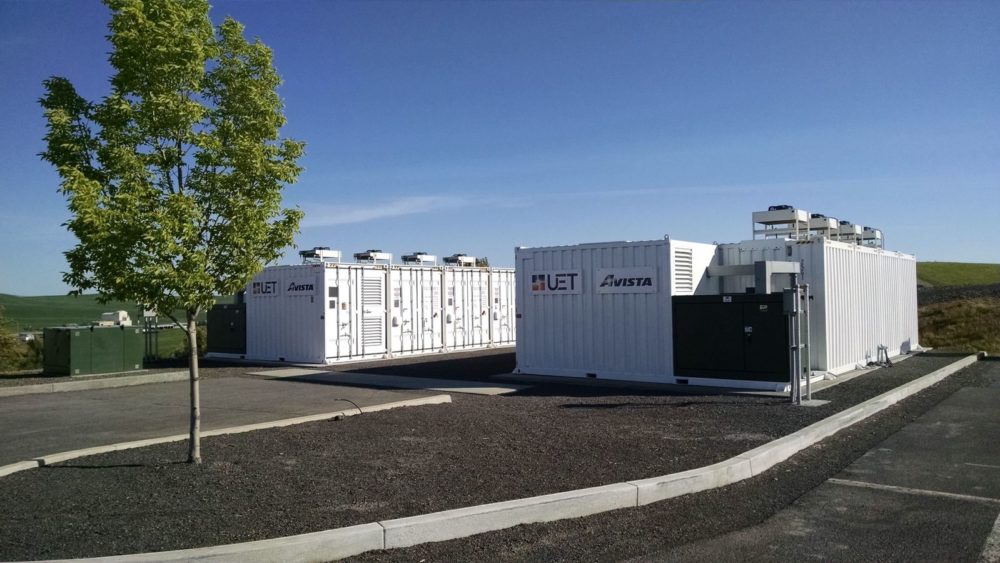
The US energy storage market experienced a strong first quarter despite the effects of the coronavirus pandemic.
That is according to a report by energy research firm Wood Mackenzie and the US Energy Storage Association (ESA), which found residential storage set another record in Q1 as deployments hit 44.4 megawatts (MW), up 10% from the final quarter of 2019.
The analysis, titled US Energy Storage Monitor, notes the milestone was reached because markets such as California and Hawaii “remained strong and customers in emerging markets looked to storage for resilience”.
Although non-residential deployments were down by 25% from the fourth quarter of last year, a total of 31.6MW across the opening months of 2020 ensured it was still the third-strongest quarter on record.
Coronavirus did not hit US market until end of March
The effects of coronavirus did not hit the US energy storage market until late March, meaning the impact in Q1 was “muted”, according to the report.
ESA CEO Kelly Speakes-Backman said the first-quarter numbers “indicate that despite dampening effects of the coronavirus crisis, energy storage will ultimately experience a positive growth trajectory in 2020”.
“This is evidenced by increases in both capacity and deployments of the residential and non-residential sectors,” she added.
“While the ongoing pandemic will more seriously affect Q2, we anticipate year-over-year growth as states have continued to pass regulations and legislation to encourage energy storage deployments.”
Strong first quarter for US energy storage market
While California led the way in the non-residential storage in the first quarter, Massachusetts and New York “staked a strong claim on the storage map with a few large community solar-plus-storage projects”.
The report notes that these accounted for most of the capacity installed in Massachusetts and New York in Q1 of 2020.
While a total of 97.5MW was deployed in Q1 2020, a 48% reduction quarter-over-quarter and a 39% drop year-over-year, the decline was “primarily due to a slow front-of-the-meter (FTM) segment which dropped 79% in MW terms quarter-over-quarter”.
But the analysis claims FTM deployments are expected to “bounce back significantly” in upcoming quarters as “larger, longer-duration systems come online thanks in large part to utility procurements”.

Although the effects of the virus were not felt across the first quarter of 2020, Q2 has already experienced “challenges relating to customer acquisition, installation and interconnection”.
Wood Mackenzie senior analyst Brett Simon said Q1 of 2020 posted a “strong quarter for behind-the-meter (BTM) deployments in the US”.
He added: “However, this is a calm before the storm for the BTM market. Preliminary conversations with market players in April and May indicate strong impacts from the coronavirus.”
Utilities recorded a 40% decline in residential storage applications
Utilities have reported as much as a 40% decline in residential storage applications from March to April this year, according to the report.
It notes that the “decline in storage deal flow” will have reverberations for the non-residential market into next year given the timelines of such projects.
“On the bright side, installers and developers report few issues securing product they need, as much of their supply comes from Asian factories that have ramped back up production over the last couple months,” it added.
“Additionally, the pivot to virtual sales, while not seamless, has fared better than initially expected with installers reporting early success in securing deals through this format.”
US energy storage market to ‘grow significantly over the next six years’
After a “ground-breaking” final quarter was recorded in 2019 and a “strong opening to 2020”, Wood Mackenzie and ESA have forecasted the US energy storage market to “grow significantly over the next six years”.
The analysis claims market value will cross the $1bn annual threshold in 2020 despite the impacts of the coronavirus.
It added that by 2025, annual market value is expected to sit at $6.9bn, with yearly deployments hitting nearly seven gigawatts (GW).
The FTM segment will “continue to make up the bulk of the market, driven by massive investment from vertically integrated utilities in regulated markets and developers taking advantage of wholesale market opportunities and incentives in key markets”.
The report said the residential segment is expected to “continue its upward trend”, beating its 2020 numbers six-fold in 2025, but it predicts the non-residential space will “grow at a slower pace”.
“A significant amount of non-residential upside is tied to community solar-plus-storage, which is concentrated in Massachusetts and New York and driven by those states’ strong incentive programs and access to wholesale markets,” the report added.
“However, as these markets are relatively small, even a slight delay or cancellation of a single project could prompt a wild swing in a year’s expected upside.”



